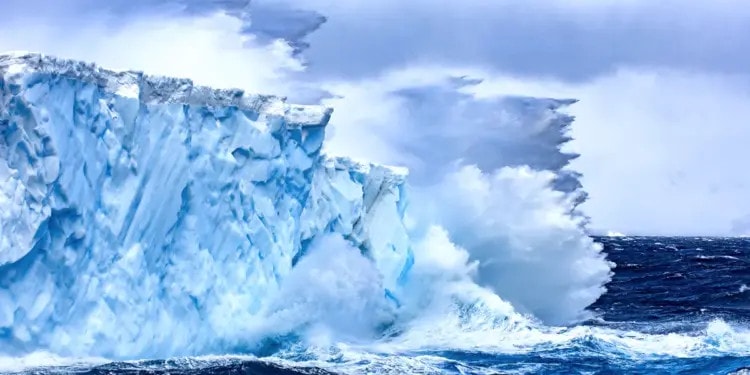Three million years ago, the atmosphere’s carbon-dioxide levels weren’t so different from those of today, but sea levels were dozens of meters higher. Looking that far back presents a foreboding peek into the future, as satellite records show that melting Antarctic ice sheets are on their way to bulking up this epoch’s oceans, too. The puzzle for scientists is that the climate models they create can’t seem to match what they see with their own eyes.
“Lots of people have been scratching their heads trying to figure out what is missing from our ice sheet models,” said Alex Bradley, an ice dynamics researcher at the British Antarctic Survey, part of the United Kingdom’s Natural Environment Research Council.
This week, two new papers in the journal Nature added to the growing pile of evidence that scientists’ models aren’t capturing a complete picture of Antarctica’s rapid deterioration. One study, published on Thursday, found that more than twice as much meltwater could be weighing on the surface of ice shelves, extensions of glaciers that float on the sea, than scientists previously thought. The study published on Tuesday identified a new potential tipping point: Where the land-anchored ice meets the sea, warming ice is creeping underneath, melting it from the belly up.
From above and below, Antarctica’s vault of ice, holding back almost 60 meters of potential sea level rise, seems more imperiled than ever. But neither of the dynamics detailed by these recent studies are used in climate models — potentially leading to an underestimation of how high seas might rise in coming decades.
The tipping point identified by Bradley and his colleagues focuses on one of the most tender areas of the Antarctic ice sheet: the grounding line. Here, the ice flows off the land and begins to float on the sea. As the oceans become warmer, they melt a gap between the ice and the ground and push the grounding line back.
Related Articles: 5 Visible Signs of Climate Change in Antarctica | The Past Holds the Key to Future Antarctic Melting | Action for Antarctica: Saving the World’s Last Great Wilderness | Blue Whales are Making a Comeback in the Atlantic | The Day After Tomorrow Is Arriving, a New Study Warns | Unravelling Antarctica’s Sea Ice Puzzle
“So the ice is sliding on top of a rock that acts as a brake on the flow of the ice,” Bradley said. “And if you start to remove some of that brake, then the ice essentially flows faster.” The water erodes a cavity under the ice, which invites more water to encroach even further. And as the melting begins to penetrate kilometers beneath the ice sheet, the tipping point emerges: a self-perpetuating cycle of increasingly rapid melt.













